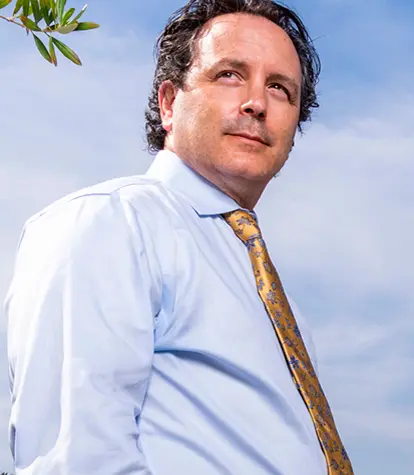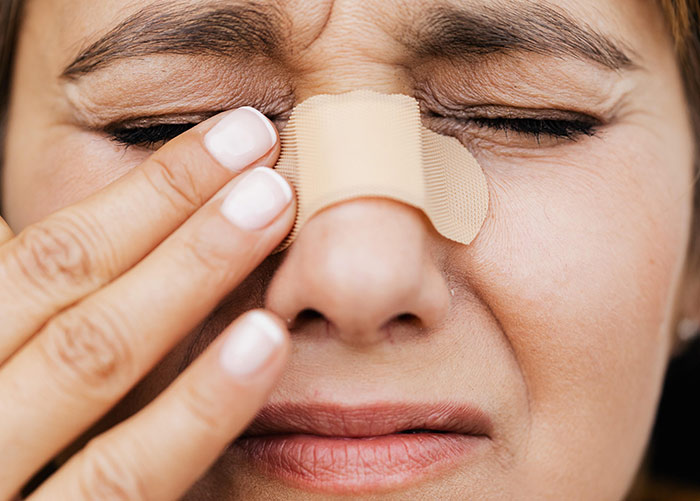

Posted by Dr. Litner and Dr. Solieman on December 7th, 2009
Almost every day we see a patient or two who have a crooked nose, with the obvious question of how can it be fixed. What most patients and even many surgeons still do not realize is that correction of a crooked nose is truly one of the more difficult things to achieve with rhinoplasty. So how do we suggest you get it done?
First scenario, is in the acute situation, say after a car accident or some other injury. You may or may not go to the Emergency Room at the nearest hospital, where they may or may not even notice your nose depending on the level of other injuries. Occasionally you may also have a nose bleed, which then causes the ER doctor to place some Merocel or other packing to stop the bleeding. What’s next?
If the ER doc calls and you are lucky enough to have a specialist come in to see you it may be either a “plastic surgeon” or an “ENT.” The problem here is that you have no idea if this doctor really has genuine expertise in the nose or rhinoplasty in particular. Let me be clear, obviously either of these doctors can manage the acute trauma and have treated patients with broken noses before. The issue I am raising is that rhinoplasty is perhaps the most exacting of all plastic surgery procedures- as the difference of a millimeter can really be the difference between a straight nose and a crooked nose, or a straight profile or small bump.
What we find is that there are many surgeons who still recommend a “simple” closed reduction of the fracture. In other words, they can numb the nose and surrounding area and simply push the broken bone back to its original position. If you live in Canada or if the present health care reform package in the House passes, this will likely be the course of treatment the vast majority of people will receive. And truthfully, if there is a simple non-comminuted, non depressed fracture and no deviation of the septum, this treatment will suffice.
But in the majority of other cases we have found that simple closed reduction does not correct all of the problems. In our experience, in the majority of cases the nasal fracture is not so simple. Oftentimes the septum and/or the upper lateral cartilages are involved. So what does that mean and how does that change the treatment algorithm?
The problem is that if the fracture results in deviation of the septum and/ or upper lateral cartilage, closed reduction will not address these areas. In general, if the septum is fractured, it must be corrected, both to correct your new breathing obstruction and also to allow for the fractured bone to move to its original position, and more importantly have the bone stay there. If the septum fracture is not repaired, we have found that over time the bone can drift back to a crooked position due to the pressure from the septum.
As for the upper lateral cartilage, this comes into play when the nasal bone is depressed (pushed in) due to the fracture. Nasal anatomy teaches us that the upper lateral cartilages slide under the nasal bones in their upper connection. Therefore, when the nasal bone gets fractured in, the upper lateral cartilage can and often does get pushed in along with it resulting in an internal valve collapse. Unfortunately, the reverse is not true- if the nasal bone is pushed back out, as in a closed reduction, this does not necessarily lead to the upper lateral cartilage moving as well.
Often times, in the acute situation when there is facial and nasal swelling as well as other potential injuries, some of these nuances can and often are missed on initial examinations. As a result, with experience we have learned that it is often better to simply wait a few weeks to allow for all the swelling to settle allowing us to better assess the full extent of injury. What we have learned is that by doing so we are able to correct all of the associated injuries, which means that we can have a high success rate in achieving a happy patient who does not have to have revision surgery down the road.
When can fillers be used and can they be dissolved? It is very important to distinguish between permanent and non-permanent...

As a rhinoplasty practice, every so often we have a patient who got hit in the nose post-surgery. The question is always “Did I...

Congratulations, you have booked your facial plastic surgery appointment with Profiles Beverly Hills. What now? To facilitate...

ASK US ANY QUESTION

Sign Up For Our Newsletter
to Receive Special Offers!